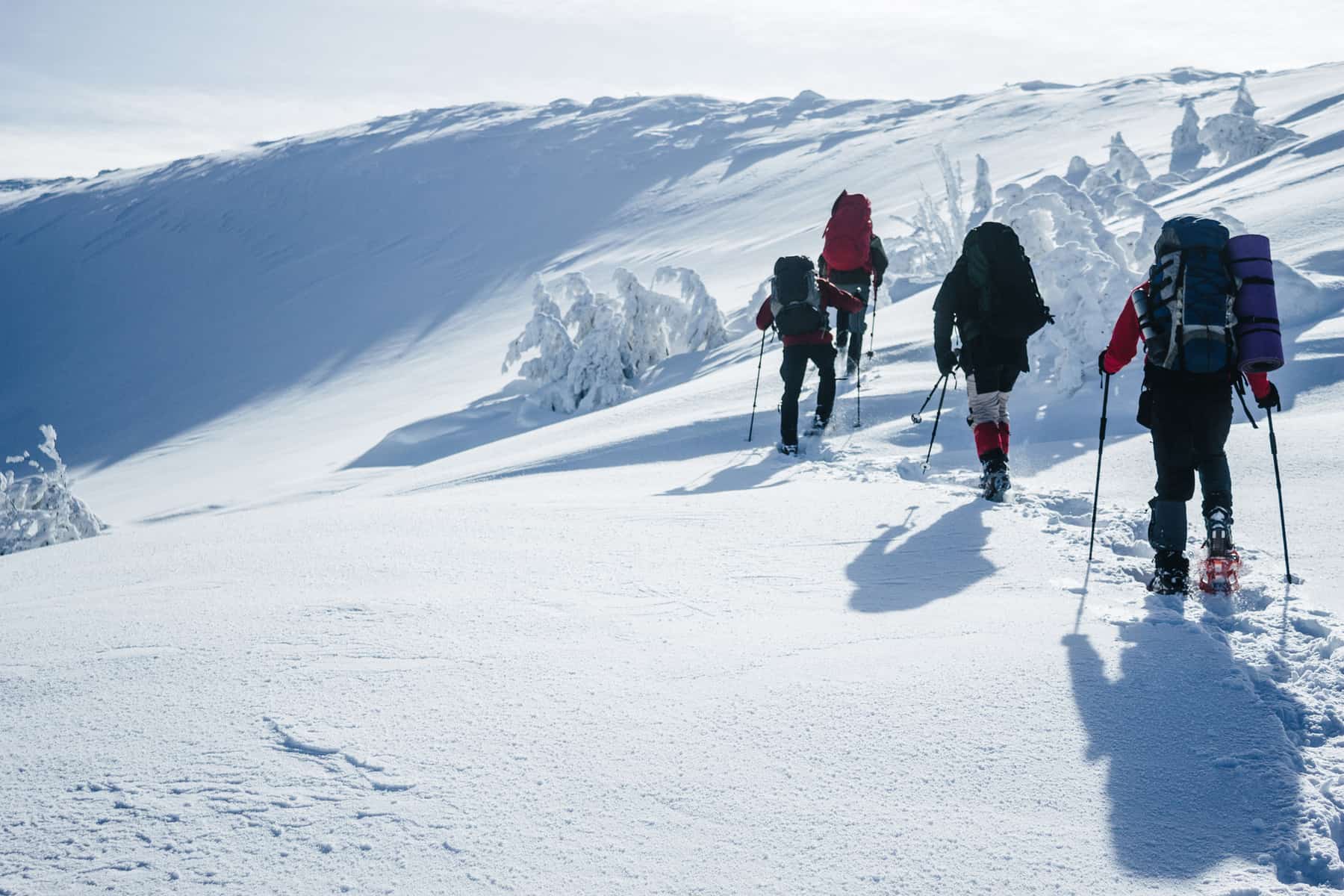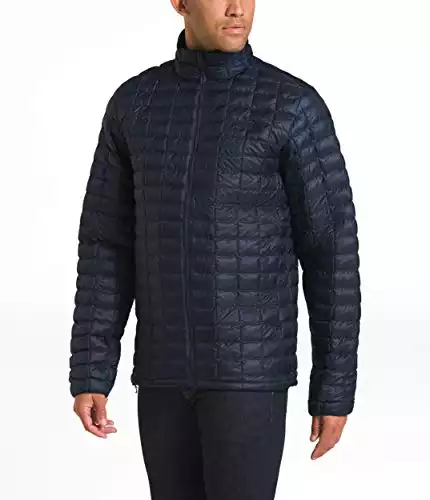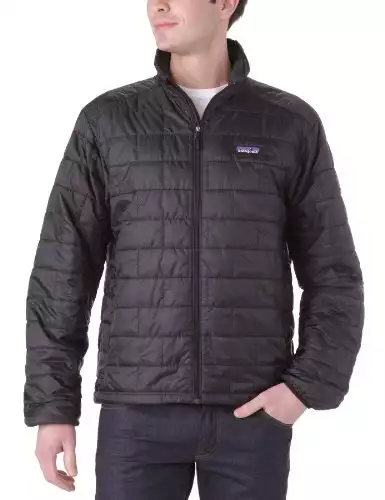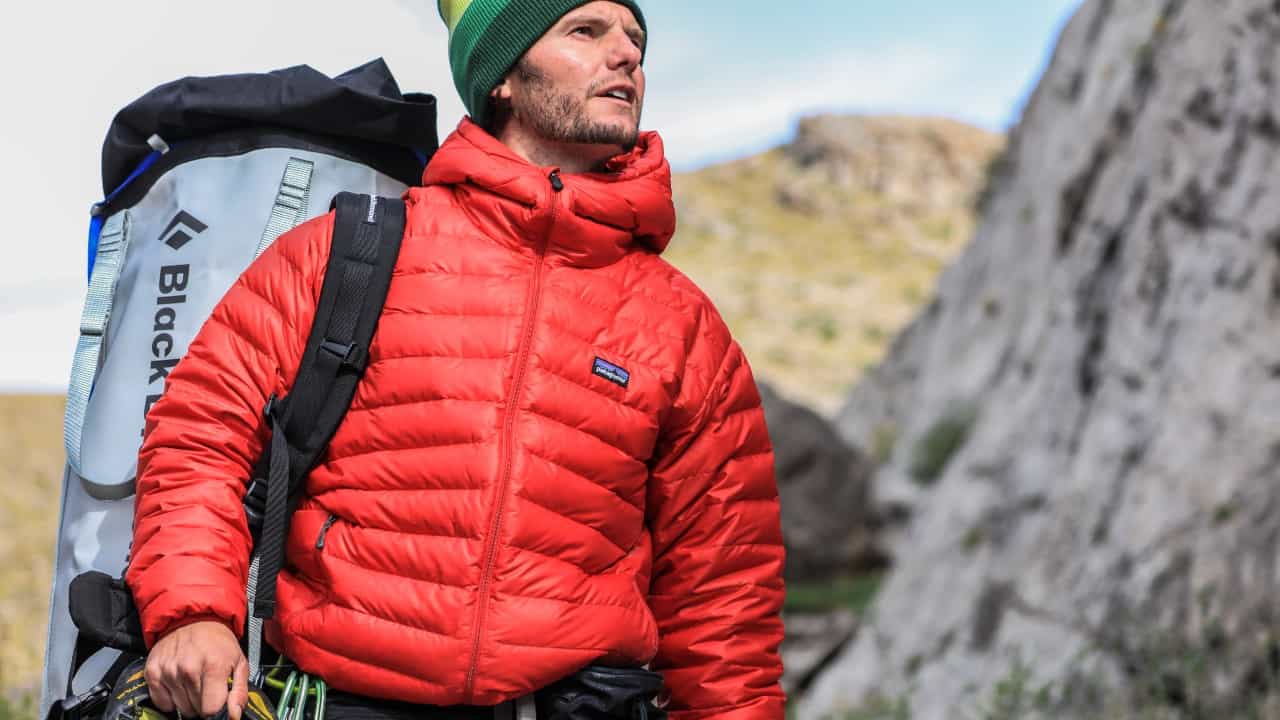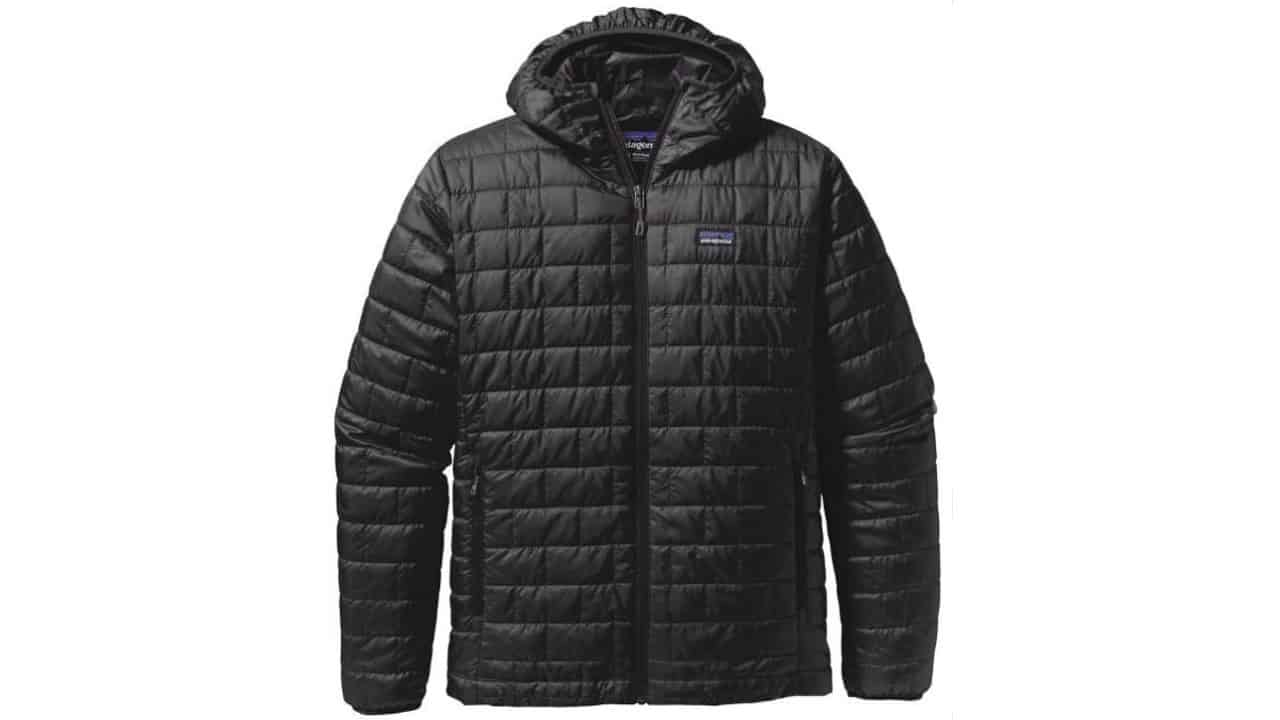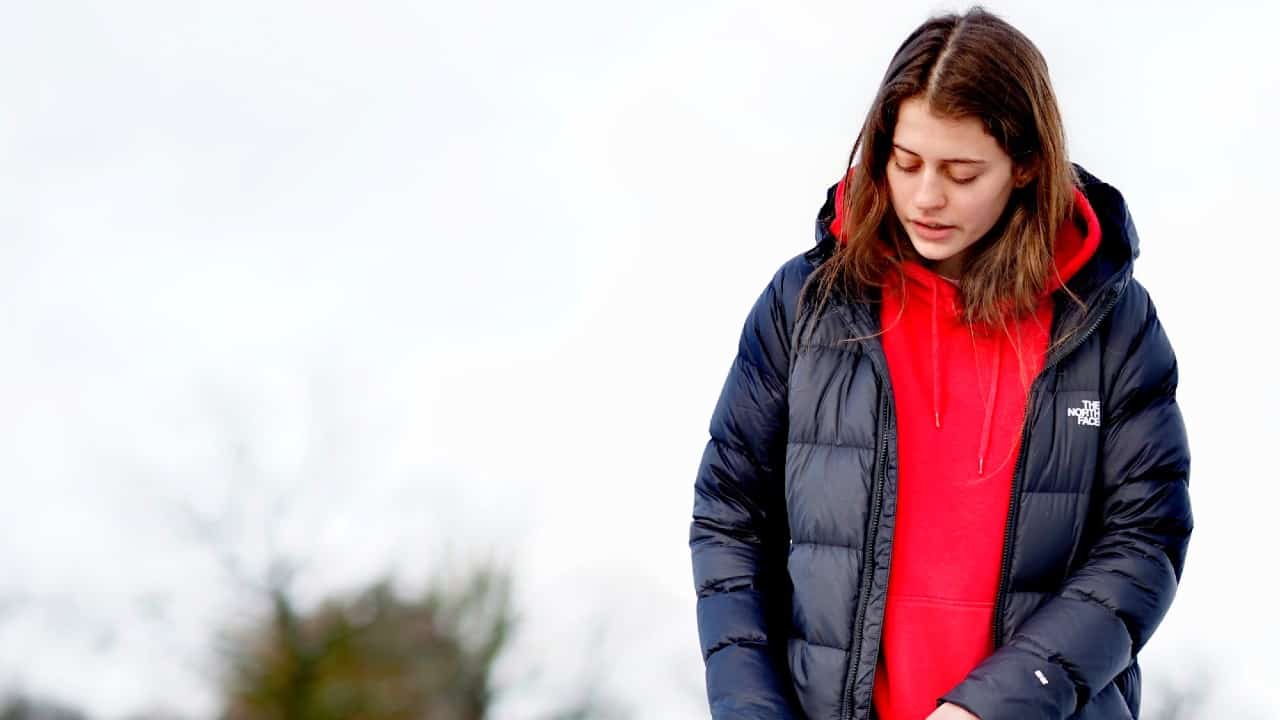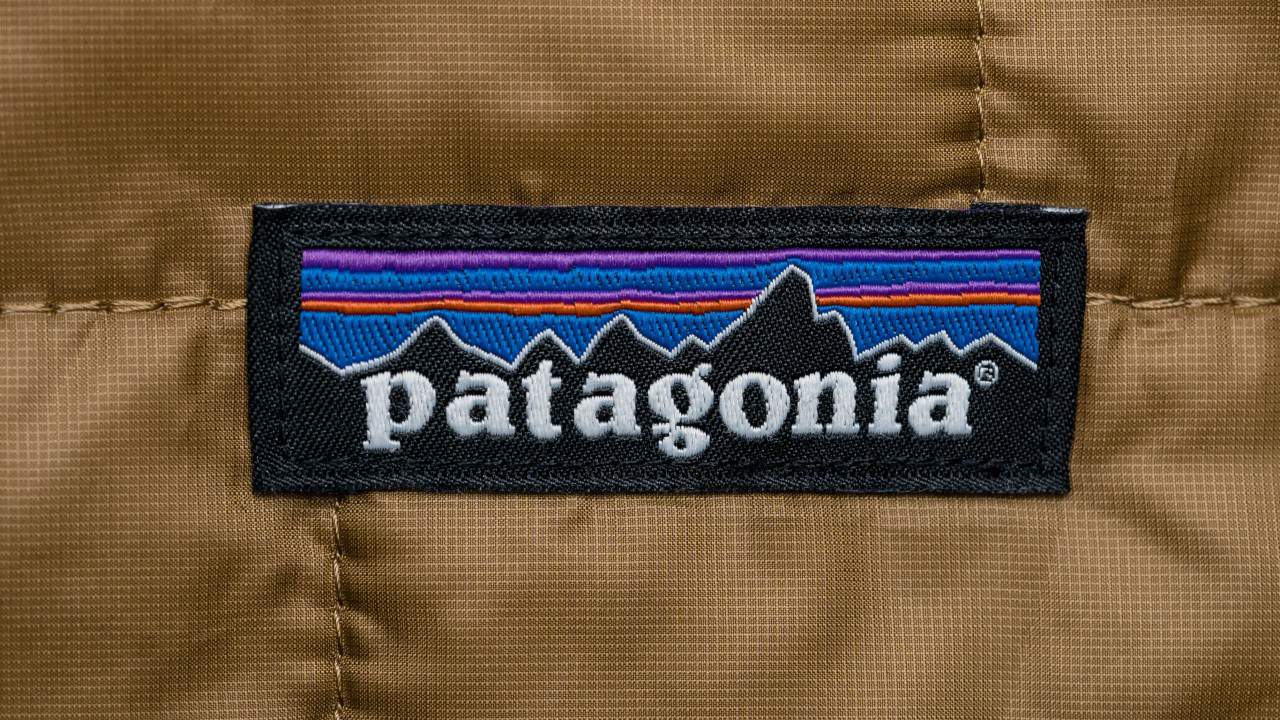When it comes to synthetic down jackets, The North Face ThermoBall Jacket and the Patagonia Nano Puff Jacket are among the best ones on the market. So, it’s no surprise if your buying decision has come down to these two choices. So who wins between ThermoBall vs Nano Puff?
To help you find the synthetic down jacket that best suits your needs, let’s take a closer look at the specific qualities and features of these two flagship synthetic insulated jackets and see how they compare.
The North Face Thermoball Jacket
Features:
- Weight: 15.2 oz
- Insulation: 11 g/ft² PrimaLoft ThermoBall synthetic insulation
- Fabric: Recycled nylon with a DWR finish
- Pockets: 1 internal chest pocket, 2 secure-zip hand pockets
- Color options: 24
Hooded version:
Patagonia Nano Puff Jacket
Features:
- Weight: 11.9 oz
- Insulation: 60g PrimaLoft Gold Eco Insulation
- Fabric: Recycled polyester ripstop with a DWR finish
- Pockets: 1 internal chest pocket, 2 secure-zip hand pockets
- Color options: 11
- Style: Puffer jacket
Hooded version:
Women’s versions of the jacket:
Insulation and Warmth
Although down insulation is generally considered to be better, there are many compelling reasons why you should go with synthetic insulation.
Unlike the average natural down jacket, the average synthetic jacket dries quickly and stays warm even when it gets wet. A synthetic jacket is more breathable and easier to care for compared to a natural down jacket. It is also much more affordable than goose down.
But not all synthetic down is made equal. The quality and performance can vary greatly between different types of synthetic insulation, which brings us to our point:
Both ThermoBall and Nano Puff are derived from PrimaLoft insulation. PrimaLoft insulation is designed to mimic the performance of a natural down jacket and does a very good job of doing so.
The fact that it has been in use for nearly 40 years speaks volumes about its quality. As far as synthetic down insulation goes, PrimaLoft products are the best on the market.
There are different types of PrimaLoft Insulation. North Face developed its ThermoBall insulation in partnership with the PrimaLoft company, while Patagonia’s jacket uses PrimaLoft’s proprietary Gold Eco insulation—the company’s highest performing product.
Each natural down jacket is rated according to its loftiness. This is called fill power. The higher the fill power, the more insulating ability the down has.
Quality down insulation has a fill power rating of at least 500. In terms of performance, ThermoBall synthetic insulation is equivalent to a 600-fill-power goose down. PrimaLoft Gold Eco, on the other hand, is comparable to 550-fill-power down.
But the efficiency of the insulation isn’t the only factor that affects warmth. The amount of insulation material used also plays an important role here, and the North Face ThermoBall jacket uses less insulation than the Patagonia jacket.
Still, the ThermoBall Jacket is slightly warmer than the Patagonia synthetic insulated jacket. The main reason behind this is the fact that the ThermoBall insulation is shaped into small fluffy clusters, similar to goosedown.
Neither of these insulated jackets is ideal for extremely cold winters, but the Thermoball makes a better layering piece in any case. It is closer to a proper down jacket than Patagonia.
Fit and Sizing
The Patagonia insulated jacket has a more tapered fit. The jacket gives you enough room to move freely while giving you a snug hug.
However, there have been some complaints about Patagonia’s fit guide. If you plan on layering underneath, you may have to size up because the underarms and the shoulders are a bit tight. It’s a good idea to try it out before you buy it.
The ThermoBall features a more roomy fit, even though it’s advertised as a slim fit jacket. It offers plenty of mobility, and it’s snug where it needs to be (the hem and cuffs).
But it’s key to get the size right. Otherwise, the bulky torso and shoulders may create too much uninsulated space if you don’t wear a thick enough layer underneath. The insulated jacket is true to size according to most reviews.
The Thermoball jacket comes in 7 sizes (XS to 3XL) while the Nano Fit jacket comes in 6 sizes (XS to XXL).
Style and Color Options
The Patagonia insulated jacket features a highly popular quilted square pattern. It’s a great choice if you prefer a simple and classic design.
The ThermoBall is also quilted. Its recessed cuffs are a very nice touch, both in terms of style and functionality.
The Patagonia synthetic insulated is available in 11 colors, while the ThermoBall comes in a whopping 24 different colors. The color options for the ThermoBall include vibrant shades and patterned designs, while Patagonia only offers traditional color options.
Moreover, the North Face offers a camo version of the ThermoBall jacket to those who want to blend in with their surroundings. If you decide to go for the ThermoBall, you can rest assured that you’ll find a model that meets your specific style.
So, the ThermoBall Eco Jacket is the winner in this category. After all, there’s a good reason why the North Face has become a well-known fashion symbol.
Materials and Durability
Patagonia features a 20D polyester ripstop lining and a 22D polyester ripstop shell. Both the shell and the lining are made from 100% recyclable fabrics, and at least 55% of the insulation material is made from post-consumer recycled polyester.
On top of being eco-friendly, the Patagonia insulated jacket is incredibly durable. It will resist abrasions even in rougher areas, partly thanks to its brick quilting pattern and durable thread.
The slippery design of the liner fabric allows the Patagonia jacket to layer well under a shell. But if you start sweating too much it may feel a bit sticky.
The ThermoBall is made from recycled 30D nylon. Even though the denier is higher, the insulated jacket doesn’t use ripstop fabrics.
It isn’t as abrasion-resistant as the Nano Puff and the overall build quality of the Patagonia jacket is better. Still, the burly shell of the ThermoBall Hoodie will resist brush and thorns when you’re bushwhacking.
While both Patagonia and the North Face confidently offer lifetime warranties on all of their insulated jackets, it isn’t unreasonable to expect the Patagonia jacket to last longer than the ThermoBall.
You can drag it through the dirt without any worry. It will look as good as new after a quick spin in the washing machine. The Patagonia jacket is the winner in this category.
Breathability
Both nylon and polyester are breathable fabrics, but polyester is generally more breathable. However, that isn’t the case here. Compared to the Patagonai jacket, the ThermoBall jacket does a much better job of regulating body temperature during high output activities.
The stretchy permeable fabrics of the ThermoBall promote breathability and offer decent protection from the wind at the same time. The Patagonia synthetic insulated jacket is still a breathable jacket, but both the interior liner and the outer shell fabric contribute to blocking airflow.
Weatherproofing
Even though they are not designed for extreme weather, both jackets deliver a decent level of weather protection.
As mentioned, synthetic down insulates quite well even when wet (and this especially goes for PrimaLoft materials).
However, the ThermoBall insulation performs slightly better than Patagonia’s PrimaLoft Gold insulation because it is non-stick. In other words, the ThermoBall synthetic down provides better insulation during wet conditions because its clusters don’t clump together.
Both the ThermoBall and the Patagonia jacket feature a DWR (durable water repellent) finish, and it’s hard to say which one is better.
The ThermoBall won’t allow water to soak through the shell so easily if you get caught in heavy rainfall. For such a thin and light jacket, this is quite impressive. The outer fabric on the Patagonia jacket beads water just as well as the shell on the North Face ThermoBall.
Still, no DWR finish isn’t entirely waterproof. The water will eventually penetrate the DWR coating if you stand in the rain for too long. The DWR coating itself also has a limited lifespan. But you can use a DWR (durable water repellent) spray.
While both synthetic jackets are wind-resistant, the Patagonia jacket performs better in this area. Even though this is to be expected considering that the ThermoBall is more breathable, the wind-resistance Patagonia offers is still praiseworthy.
The interior liner of the Patagonia jacket does a great job of blocking the wind that manages to penetrate the seams. When it comes to wind resistance, not many featherlight jackets can compare to the Patagonia jacket.
Weight and Packability
Both synthetic jackets are fairly lightweight, the Patagonia jacket being slightly lighter. Both models are packable as well. Each jacket is an excellent choice for variable weather.
Considering the quality and performance of its fabrics, the Nano Puff lightweight jacket offers exceptional compressibility. It packs into its chest pocket.
As far as puffer jackets go, it creates one of the smallest stuffed packages. But it does take a while to pack it away. The caveat is that the smaller the packed size of a jacket, the longer it takes to stuff it into its own pocket.
The stuffed size of the ThermoBall jacket is bigger than that of the Patagonia jacket. The ThermoBall compresses easily, and it doesn’t take much effort to pack it into its left-hand pocket. If the packed size of a jacket is important to you, the Patagonia jacket is undoubtedly the better option.
Pockets
When it comes to pockets, the differences between the two synthetic jackets are minimal. Each jacket has an internal pocket and two zippered hand pockets.
Since the chest pocket on the Nano Puff doubles as a stuff sack, it comes as no surprise that it’s larger than the internal pocket on the ThermoBall jacket. It also features a reinforced carabiner clip-in loop.
The hand pockets on the ThermoBall are generously warm and roomy. They are also covered for extra protection.
Hems and Cuffs
Both synthetic jackets feature snug, elasticized cuffs. They are designed to keep the cold from seeping in.
The cuffs on ThermoBall are slightly better because the internal elastic bands are recessed into them. Thanks to their design, they can nicely overlap a pair of gloves. Check our review Best Thin Lightweight Winter Gloves.
Each model has an adjustable drawcord hem. The Patagonia jacket has a drawcord at the hem that allows you to easily seal in warmth. The adjustable hem on the ThermoBall is just as functional.
So that you can adjust the hem evenly, the ThermoBall features two waist cinches. They are designed to stay out of the way when you are carrying a backpack with a waist belt.
Unlike the ThermoBall jacket, the Nano Puff has a drop tail hem at the back that provides extra warmth.
Other Features
Since both the Thermoball and the Nano Puff are designed to be functional and lightweight, they don’t come with many extra features.
The main zipper on the ThermoBall operates flawlessly thanks to its large teeth. It comes with a ThermoBall draft tube that prevents warmth from escaping through the zipper. The stand-up collar on the jacket tucks nicely under the chin, without being too restrictive.
The main zipper on the Nano Puff comes with a zipper garage at the chin and a wicking interior storm flap. On top of shielding you from the cold, these features significantly improve next-to-skin comfort.
Value
When it comes to technical and winter wear, neither brand is considered to be affordable. However, considering how much other Patagonia and North Face jackets cost, it’s safe to say that the Nano Puff and the ThermoBall fall on the lower end of the price spectrum.
Both models average at around $200, and they both offer great value for money. Each model is backed by a lifetime warranty, and both brands offer similar promises.
If your Nano Puff jacket isn’t up to par, Patagonia will repair it, replace it, or refund it for free. The North Face warranty covers defects in the workmanship or the materials, even if the issue occurs after extended use.
Both brand repair damage stemming from normal wear and tear for a nominal fee.
As mentioned, the Nano Puff jacket seems to be more durable than the ThermoBall. Generally, the North Face makes more casual and style focused-pieces. Patagonia makes really high-performance pieces and is a more expensive brand than the North Face.
While the Nano Puff offers a bit more value than the ThermoBall, the ThermoBall doesn’t lag far behind. Undoubtedly, you will get your money’s worth if you go for the North Face Jacket.
Patagonia Nano Puff vs North Face Themoball: Hooded Versions
The ThermoBall jacket comes in a couple of different versions, and so does the Nano Puff. For those who prefer hooded puffer jackets, there are the ThermoBall Eco Hoodie and the Nano Puff Hoody.
The hooded version of the ThermoBall jacket is a bit more expensive than the standard version. It comes in fewer color options and fewer sizes (S to 3XL). Design-wise, there’s isn’t much difference.
The hoodie isn’t removable nor is it adjustable. While the lack of drawcords is a considerable downside, the elastic binding somewhat makes up for it. Moreover, the hood is well insulated and comfortable, so it is still worth the extra investment.
Almost everything that goes for the ThermoBall Hooded Jacket holds true for the Nano Puff Hoody. The hooded version of the Nano Puff is pricier and heavier than the standard version. Even though it comes in the same sizes, it’s only available in 5 colors.
In terms of comfort and warmth, the hood is excellent. It features an elastic design instead of an adjustable drawcord. Still, the hood is pretty snug, so it offers decent protection from the wind.
If the hood is your main priority when choosing a jacket, you can definitely go either way.
The North Face ThermoBall Eco Hoodie
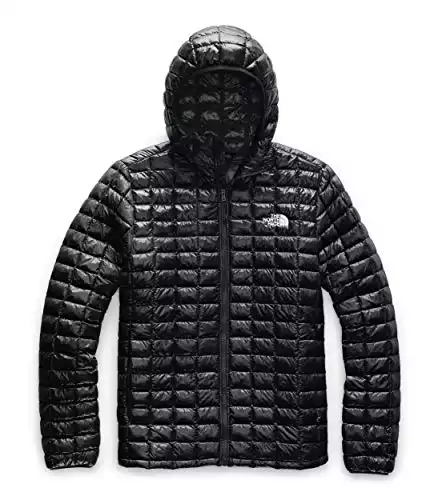
Patagonia Nano Puff Hoody
Patagonia Nano Puff vs North Face ThermoBall: Women’s Versions
In terms of design and performance, there isn’t any significant difference between the women’s and men’s versions of the ThermoBall Jacket. The women’s version weighs just 10 ounces and has a cinched waist.
This lightweight jacket is available in 7 sizes (XS to 3XL). Like the men’s version, the women’s version of the Thermoball jacket is available in 24 colors. However, the color options differ.
The North Face women’s version is available in 7 sizes (XS to 3XL) and 7 colors.
As for Nano Puff, the story is almost the same. Apart from the cinched waist, there is no significant difference between the men’s and women’s versions.
The Patagonia Women’s Nano Puff Jacket comes in 11 colors, just like the men’s version. However, it’s available in one more size (XXS). The Women’s Nano Puff Hoody is available in the same sizes as the Women’s Nano Puff Jacket, but it only comes in 6 colors.
Women’s ThermoBall Hooded Jacket
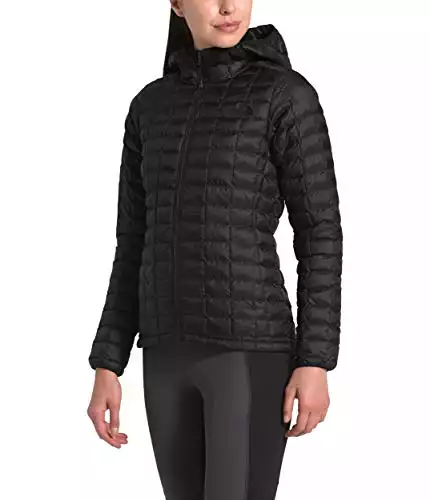
Patagonia Women’s Nano Puff Hoody
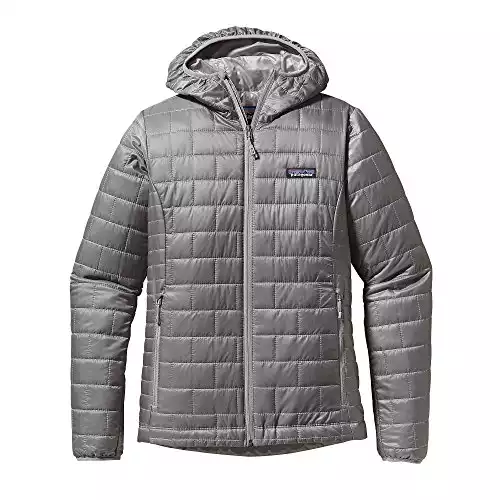
ThermoBall vs Nano Puff: Which Jacket Is Better?
As always, it all comes down to your own preferences and priorities.
If you value durability and the quality of the fabric above all, the Patagonia Nano Puff Jacket is the better choice. It is more resistant to wear and tear and offers better protection against the wind. If you are still unsure and looking for similar models as Patagonia Nano Puff, check our review of the best Patagonia winter jackets.
If comfort and style are your main priorities, you will probably be better off with the North Face ThermoBall Jacket. The ThermoBall is warmer, more breathable, and less restrictive, and its roomy fit allows for better layering.
In my opinion, the ThermoBall is the winner of this Patagonia Nano Puff vs North Face ThermoBall showdown.
But keep in mind that neither jacket significantly outperforms the other in any category. Both the Thermoball and the Nano Puff are great synthetic insulated jackets, and you really can’t go wrong with either one.

I love hiking, backpacking, and camping. From the Camino de Santiago to the West Highland Way in Scotland or simply a great day hike on the weekend. Hiking refreshes me, my mind, and keeps my body reasonably fit. So far I have walked three Camino routes and many other long distance hikes in the UK, Canada, and around the rest of Europe. One of the best was my hike up Ben Nevis.

